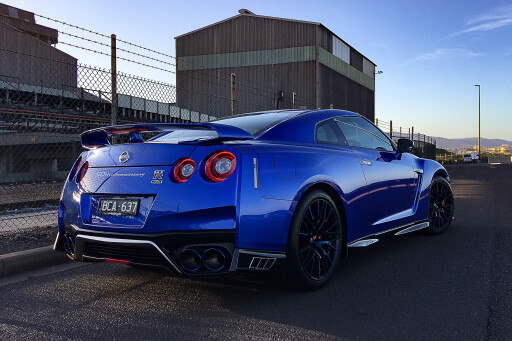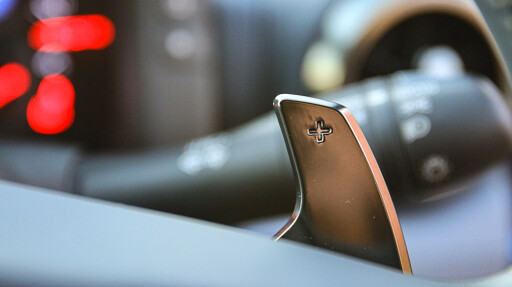
The very fact that the Nissan GT-R 50th Anniversary Edition is as good as it is really defies convention. It’s been a case of improvement by a thousand tweaks over the course of 12 years, but the 2020 GT-R is, finally, an affordable supercar that has shaken off the majority of its foibles.
 Blisteringly fast, resolutely engineered, iron-willed composure at otherworldly speeds and a demeanour that still turns head… Godzilla has finally arrived.
Blisteringly fast, resolutely engineered, iron-willed composure at otherworldly speeds and a demeanour that still turns head… Godzilla has finally arrived.
But for how long?
In the Beginning

The GT-R’s legend has burned long and hot, though its journey in Australia has been a broken one. From the arrival of just 100 R32s in 1991 through to a generation of potential petrolheads learning all about R33s and R34s via Gran Turismo games, the GT-R hasn’t really needed masses of metal on the road to prove its point.
So when the so-called R35 arrived – it’s not actually called that, but the nomenclature stuck – in 2008, the anticipation was palpable.
A slender opportunity of grey importation for 2007 GT-Rs from Japan meant that the first few cars that landed here were pure JDM porn, destined for Targa stages and racetracks across the country.
And boy howdy, did they stir the loins.
And when the GT-R did arrive properly, it arrived with a bang. Quite literally for me, actually – a caliper bolt wasn’t nipped up on my first ever press tester and flung itself into the rim at Eastern Creek’s turn four. But I digress… the GT-R could do no wrong.
Its price undercut… well, everything with even a little bit of performance, and by a long way. It matched vaunted weapons like the Porsche 911 Turbo and Audi R8 V10 for pace and smashed them for affordability.
And it was sold in showrooms next to Pulsars and Navaras.
Bit by GT-R Bit
Over the next 12 years, the GT-R was minutely honed and fettled, eschewing major changes to its 3.6-litre V6 AWD layout in favour of tiny performance tweaks.
To wit… the 2010 version scored stiffer front springs and shocks, and stiffer rear torsion control arm bushings. That's pretty much it.
Nissan’s theory? The GT-R is good enough. And they were right.
Come 2016 and the GT-R scored a more serious brace of changes that quietened some of the interior racket and made it a smoother daily proposition, but didn’t blunt its devastating cross-country performance.
 In fact, the GT-R 50th Anniversary Edition you see here is arguably the zenith of the R35. It’s not harsh, unyielding and eye-wateringly expensive like last year’s NISMO, but on its day, there is – some 12 years after its launch – still not a faster point-to-point weapon than the R35.
In fact, the GT-R 50th Anniversary Edition you see here is arguably the zenith of the R35. It’s not harsh, unyielding and eye-wateringly expensive like last year’s NISMO, but on its day, there is – some 12 years after its launch – still not a faster point-to-point weapon than the R35.
Which will make its demise all the more bitter.
The Troubles
Despite its age, or maybe because of it, Nissan is actually not that good at being a car company. It still manages to sell more mid-sized SUVs than anyone else in the world, but the X-Trail is a rare gem in a sea of ageing products – and if a decade-old midsized SUV is your high point…
Now part of the ill-fated and trouble-plagued alliance with Renault and Mitsubishi, it feels as if Nissan has lost its identity.
The idea of multiple cars sprouting atop just a handful of cross-brand platforms seems like a good idea on paper - and combining the forces that have produced cars like the Megane RS hot hatch, the Evo X rally rocket and the formidable GT-R should have been a match made in hot rod heaven.

However, the decline in car sales over the last couple of years, the farcical case of its boss Carlos Ghosn and now the devastation of the coronavirus on industries across the globe will all combine to push a hapless Nissan right to the very edge of existence by the time this mess is all over.
In its home market, for example, it's set to cut production in its main plant in Kyushu - home of the X-Trail - by a staggering 70 per cent in May, and 40 per cent in June.
Its largest market is the US, but after years of slumping sales and stagnant product lines,
it will be a miracle unto itself if the company makes it to the end of the year there.
Facing the Facts
When sales aren’t going well, then the first department to get a knock on the door from the accounting department is R&D. If there’s money to be saved by canning an engineer’s dream, consider it canned.
The GT-R is not a big seller for Nissan. It’s a halo product, and it’s done its job admirably.
History, too, shows that the GT-R has traditionally lived a long life, but 12 years and counting with a single body style and an orphan platform, all coming from a bespoke factory that still hand-builds engines, is a big, tempting line on a profit-and-loss statement to draw a red stroke through.

Add to that the fact that future performance propulsion will have to come with a side-order of electricity. Nissan’s electric program – aside from the equally ageing Leaf – is, unfortunately nowhere.
If there is an area where the alliance could have slain all comers, it’s here… but rumours of disbanded cross-brand projects and empty offices tells the true story.
The next hot Nissan also has to live in a world where the Porsche Taycan, the forthcoming Audi eTron GT and other electric upstarts will roam, while ever-tightening emissions regulations mean that skipping the hybrid assistance step is no longer an option if the GT-R is to retain a fossil fuel-fed heart.
And that all costs money. Lots and lots and lots of money.
Farewell, you magnificent beast
Sure, there’s a bit of idle PR chat from various Nissan outlets around the world about the future of the car, but this is the key; where’s the concept for the next iteration of the GT-R?
Even if it’s a ground-up rework of the current car, where are the mules? Where are the strategic leaks?
Answer – there have been none. The next car is likely to be a made-over version of the 370Z, but early indications make it seem like even that is a back-of-the-lounge-change job for a company that is bleeding money on a daily basis, and which needs to look at its money-making SUV line before indulging in a high-performance two-door.

On the upside, there may well be forces within Nissan’s exec group with a soft side for the GT-R legend, and quite frankly, the company would be stark raving mad to ditch more than 50 years of performance legacy that transcends race wins and lap times.
But we live in perilous times, and it seems even the boss of the GT-R program is unsure of the car’s status.
“I am just the GT-R lead conductor for the orchestra. The company will show me the members of the orchestra. They need to decide who will play the violin and who will play the trumpet,” chief product specialist Hiroshi Tamura told motoring.com.au last year.
That’s not the tone of a man who knows which way he has to go…
COMMENTS